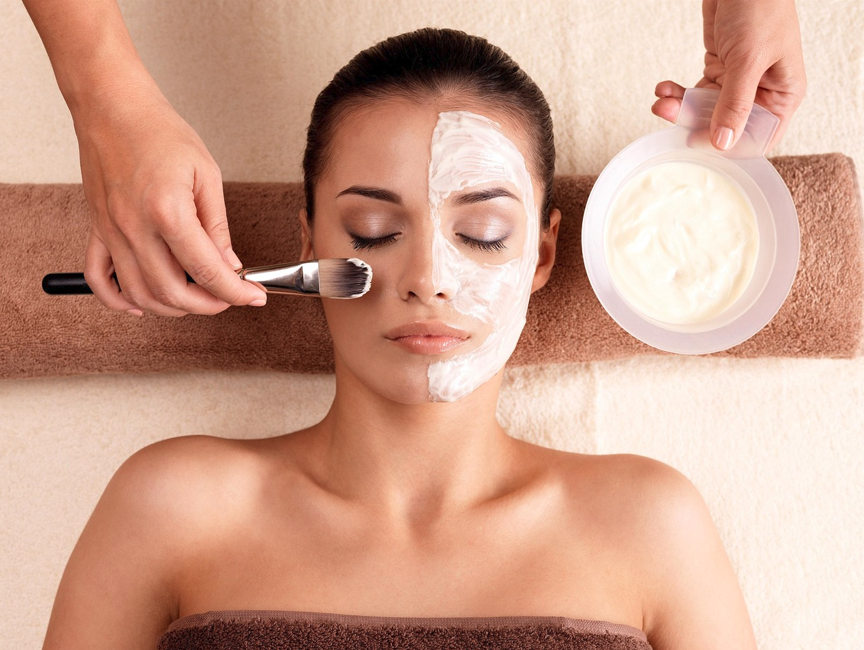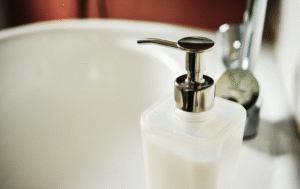In the quest for glowing, glass-like skin, many people are unknowingly sabotaging their skin barrier. The skincare industry, propelled by influencers and product marketing, has normalized excessive layering, daily exfoliation, and complex routines — but often at the cost of your skin’s natural health.
Contrary to popular belief, skincare is not a numbers game. More products do not necessarily equal better results. In fact, overdoing skincare is one of the most common causes of persistent acne, sensitivity, and inflammation.
Let’s explore what the skin barrier really is, how to know when you’ve done too much, and what science-backed steps you can take to repair and protect it long-term.
What Is the Skin Barrier and Why Is It So Important?
The skin barrier, also known as the stratum corneum, is the outermost layer of your skin. It’s composed of dead skin cells (corneocytes) embedded in a lipid matrix made up of ceramides, cholesterol, and fatty acids — often referred to as the “brick and mortar” model”.
Its main functions include:
- Preventing moisture loss (transepidermal water loss or TEWL)
- Blocking pathogens, irritants, and pollutants
- Maintaining healthy pH and microbiome balance
- Reducing inflammation and immune overreaction
When intact, your skin looks smooth, hydrated, and calm. But when compromised, it becomes dull, red, flaky, and reactive. Unfortunately, many well-intentioned skincare habits actually break down this protective layer.
6 Warning Signs Your Skin Barrier Is Damaged
Even if you’re using high-end or dermatologist-recommended products, your barrier may be crying out for help. Watch for:
- Persistent dryness or tightness after washing
- Sudden sensitivity to products you used comfortably before
- Flaky patches or visible roughness, even with moisturizers
- Burning or stinging sensation during product application
- Increased redness, especially around cheeks and nose
- Breakouts or texture issues that appear without clear cause
If you’re nodding along to these symptoms, it’s time to step back — not lean in.
How Skincare Enthusiasm Turns Into Over-Care
1. Daily or Excessive Exfoliation
Using acids like glycolic acid, salicylic acid, lactic acid, or physical scrubs more than twice a week can damage the skin’s outer structure. When the lipid barrier is stripped away, the skin loses its ability to retain moisture and protect itself.
2. Layering Incompatible Actives
Mixing retinol, vitamin C, AHAs, and benzoyl peroxide without guidance can destabilize your routine and disrupt your barrier. These ingredients, while powerful, should be carefully timed and paired to avoid chemical overload.
3. Fragranced and Harsh Products
Fragrance — even natural ones — can be highly sensitizing. Similarly, foaming cleansers with sulfates or high-pH formulas disrupt the skin’s acid mantle, leading to increased vulnerability and inflammation.
4. Using Too Many Products
A single skincare routine should ideally have 3 to 5 steps. More than that, especially when using overlapping products with active ingredients, can confuse your skin and dilute effectiveness.
5. Changing Products Too Often
Jumping between trending products each week doesn’t give your skin time to adjust or benefit. Constant change increases the risk of irritation and microdamage.
The Science of Healing a Damaged Skin Barrier
Your skin has an innate ability to repair itself, but only if it’s not under constant attack. Restoring a damaged barrier is a matter of reducing stressors, providing essential lipids, and allowing time for cellular turnover.
Here’s what works best:
1. Strip Back Your Routine
Adopt a minimalist approach for at least 4 weeks. This will allow your skin to reset.
Essential steps only:
- Low-pH cleanser (pH 5.5 or below, non-foaming)
- Hydrating serum (hyaluronic acid or panthenol)
- Moisturizer with ceramides, glycerin, or squalane
- Broad-spectrum SPF 30+ during the day
No acids, no retinoids, no peels — just barrier support.
2. Replenish with the Right Ingredients
Look for products containing:
- Ceramides: Restore the natural lipids in your skin barrier
- Cholesterol and fatty acids: Recreate the structure of healthy skin
- Squalane: A lightweight oil that mimics natural sebum
- Panthenol (Vitamin B5): A skin-soothing, hydrating antioxidant
- Colloidal oatmeal or Centella Asiatica: Calms inflammation and irritation
These ingredients work in synergy to rebuild structure and retain hydration.
3. Respect Your Skin’s Natural Cycle
It takes 28 to 40 days for the skin to renew itself. For barrier repair, give it at least one full cycle of skin renewal before reintroducing actives.
Once your skin feels calm, reintroduce one active at a time — no sooner than one every 2 weeks.
4. Protect from UV and Environmental Stress
Sun damage worsens inflammation, pigmentation, and slows down healing. Always apply:
- Broad-spectrum sunscreen SPF 30+
- Look for zinc oxide or titanium dioxide if your skin is sensitive
- Use tinted sunscreens to avoid white cast on deeper skin tones
Even on cloudy days or indoors, UV and HEV (blue light) exposure contributes to barrier breakdown.

Why Healthy Skin Barriers Respond Better to Active Skincare
You might be eager to use retinol, vitamin C, or exfoliating acids — and those ingredients do work. But without a healthy barrier, your skin will react instead of respond.
A well-functioning skin barrier:
- Absorbs active ingredients more efficiently
- Experiences less irritation
- Holds moisture better
- Looks naturally dewy and balanced without effort
Expert Source
For an in-depth understanding of the skin barrier, treatment, and ingredient safety, consult resources from the National Eczema Association — a leader in dermatology research and education.
Skincare Should Be Smart, Not Aggressive
You don’t need 12 steps to achieve beautiful skin — you need the right steps. Overdoing skincare is not a sign of dedication; it’s often a sign of misdirection. Real skin health starts with protecting the foundation — your barrier.
So the next time your skin flares up, instead of adding more, ask yourself:
“What can I remove?”
Less stress. Less product. More balance.
Faqs
1. What is the skin barrier and why is it important?
A: The skin barrier is the outermost layer of your skin (stratum corneum) that protects against moisture loss, environmental damage, and irritants. A healthy barrier keeps skin hydrated, smooth, and resilient. Overusing actives or too many products can weaken it.
2. How do I know if my skin barrier is damaged?
A: Signs include dryness, tightness, redness, increased sensitivity, itchiness, and flaky or inflamed skin. You might also experience breakouts or stinging when applying products you previously tolerated.
3. What skincare habits can damage the skin barrier?
A: Over-exfoliating, using too many active ingredients (like AHAs, BHAs, retinoids), harsh cleansers, skipping moisturizer, and layering too many products at once can all weaken your skin barrier over time.
4. How can I repair a damaged skin barrier?
A: Simplify your routine. Use a gentle cleanser, fragrance-free moisturizer, and broad-spectrum sunscreen. Look for barrier-repairing ingredients like ceramides, niacinamide, squalane, and panthenol. Avoid exfoliants and actives until your skin calms down.
5. How many products should be in a healthy skincare routine?
A: A minimalist routine with 3 to 5 steps is often best: gentle cleanser, hydrating toner or essence (optional), treatment serum (if needed), moisturizer, and sunscreen. Fewer products mean less risk of irritation and better skin barrier health.



